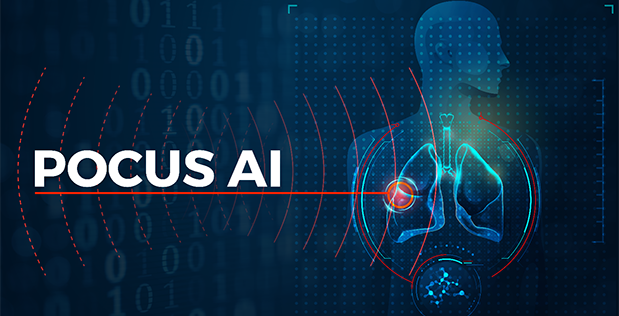CMU Team Will Put Expert Knowledge at the Fingertips of Frontline Medics DARPA Selects University To Develop AI for Portable Ultrasound Devices
Aaron AupperleeThursday, June 17, 2021Print this page.

The Defense Advanced Research Projects Agency (DARPA) has selected Carnegie Mellon University as one of five teams to develop artificial intelligence that will help field medics better use portable ultrasound devices to diagnose and treat injuries on the battlefield.
DARPA's Point-of-Care Ultrasound Automated Interpretation program will challenge the teams to create an extensible AI model that can be trained to identify injuries and assist with interventions using limited data — 15 to 30 images or video clips instead of thousands.
"Because we cannot train the AI on large datasets, we are going to incorporate knowledge straight from doctors," said John Galeotti, director of the Biomedical Image Guidance Laboratory in the Robotics Institute and head of the CMU team. "We are going to collect information from clinical experts and put it on top of the AI system so the model does not have to learn as many new concepts on its own for each new application."
Portable point-of-care ultrasound devices could help frontline medics quickly capture images of injuries and confirm whether interventions to temporarily treat them or alleviate pain were administered properly or should be tried again. These devices could increase the speed and accuracy of the care provided on the battlefield or in other scenarios where evacuations could take time. But frontline medical personnel often lack significant training with these instruments, hindering their deployment. AI promises to bridge that gap.
DARPA selected five research teams to create an AI model for the 18-month challenge: CMU, Drexel University, Netrias, Novateur Research Solutions and Kitware Inc.
The CMU team, which includes Artur Dubrawski, Alumni Research Professor of Computer Science and head of the Auton Laboratory, will work to train an AI model that combines computer vision and machine learning to help medics identify what they see through the ultrasound. They'll also incorporate clinical rules and best practices from medical experts to guide and evaluate the interventions when assessing for traumatic brain injury. DARPA requires the system to diagnose a life-threatening pneumothorax condition, which prevents the lungs from inflating, and measure the diameter of the optic nerve sheath to detect high intracranial pressure. The system must also tell a medic whether a nerve block injection needle was administered in the correct place and if a breathing tube was inserted correctly.
The value of the technology extends far beyond the military and battlefield, Galeotti said. It could be used with devices in ambulances to provide better treatment to roadside accident victims and be carried by paramedics, EMTs and other first responders to offer more effective aid outside hospital settings.
"This could help first responders provide better aid earlier, which would lead directly to not only saving more lives but also to alleviating pain and preventing long-lasting injuries," Galeotti said.
Aaron Aupperlee | 412-268-9068 | aaupperlee@cmu.edu
